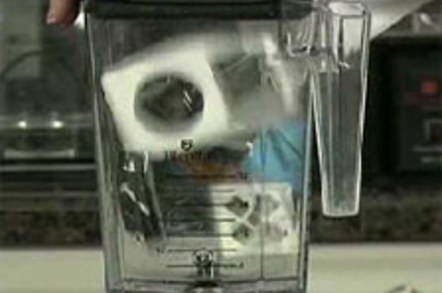Boffins brew graphene in kitchen blender
Will it blend? You bet

Take pencil leads, detergent, water, stick them in a high-power kitchen blender, and the result? A brew containing the wonder-stuff graphene.
Funded by UK chemicals company Thomas Swan, researchers from Trinity College Dublin were working on a way to produce graphene at industrial scale. As noted in Nature, the real work was done on an industrial blender, but the “will it blend?” question apparently intrigued researcher Jonathan Coleman, who set about reproducing the so-far-secret recipe in a 400W kitchen device.
Coleman used “half a litre of water, 10 to 25 mls of detergent, and 20 to 50 grams of graphite powder (found in pencil leads)”, using more sophisticated lab kit (centrifuges, spectrometers and electron microscope) to separate the graphene and identify the graphene in the brew.
Thomas Swan is launching the industrial-scale process, and by the end of the year hopes to be producing a kilogram of graphene per day that it will be selling as either a powder or a suspension.
Nature quotes a Cambridge expert, Andrea Ferrari, as saying Coleman's process has a production rate “hundreds of times” higher than the “best in the literature”, and the four-or-five layer thick graphene flakes produced by the blender are of high quality with good conductivity, Coleman says. ®








 User Center
User Center My Training Class
My Training Class Feedback
Feedback











